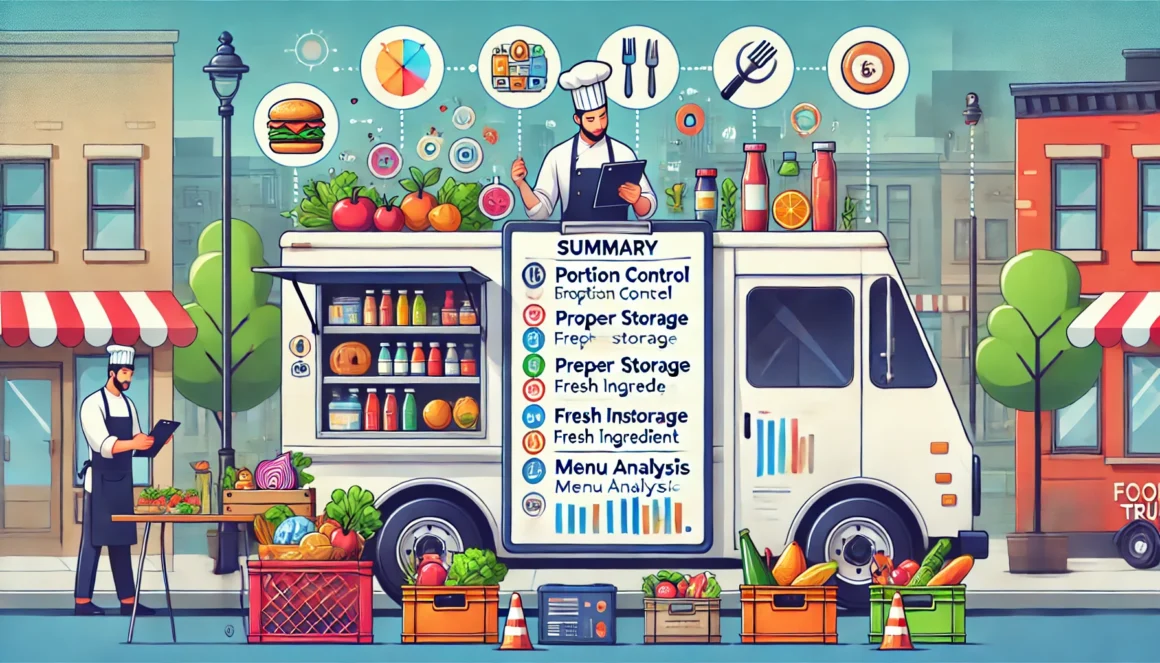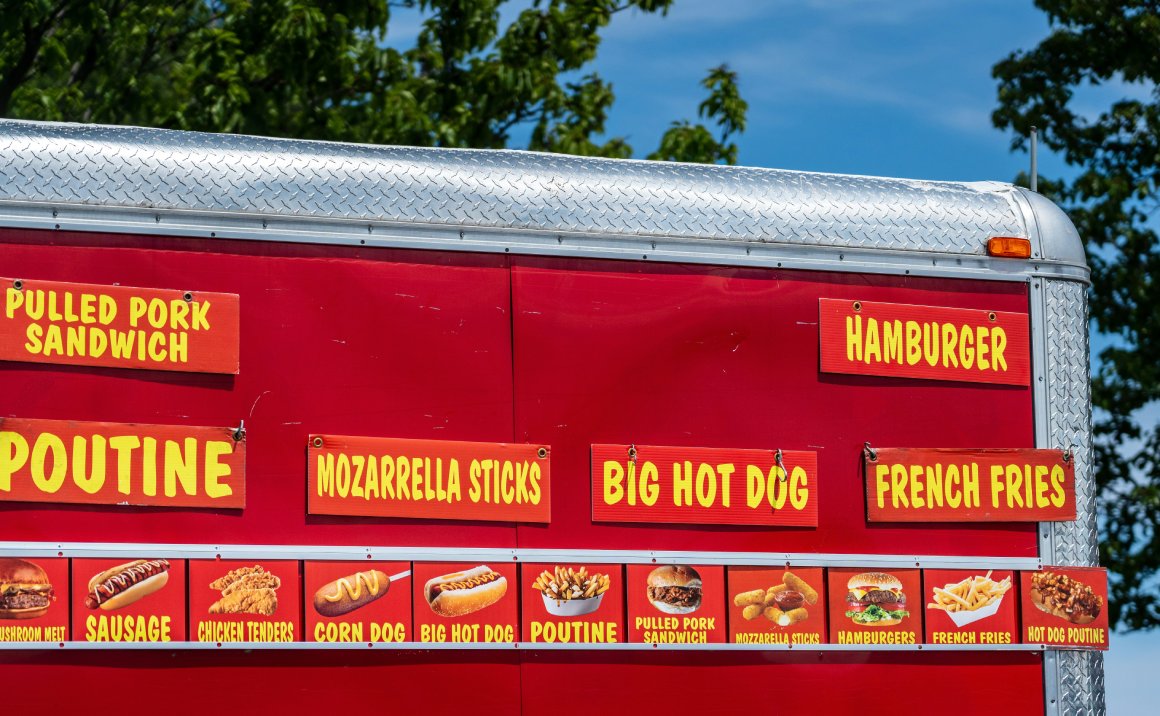
Choosing the Right Equipment for Your Food Truck: A Guide Based on Your Menu
This post is part of a regular series. Click here to start at the beginning.
The right equipment is the backbone of your food truck business. Whether you’re serving tacos, BBQ, burgers, or Asian fusion dishes, the equipment you choose will affect everything from cooking speed to food quality and safety. Having the proper tools not only helps you prepare your menu efficiently but also ensures that you meet health and safety standards while delivering consistent results to your customers.
In this post, we’ll explore the equipment needed for different types of food trucks based on the sample menus from Blog Post 15. We’ll cover the essential equipment for taco trucks, BBQ trucks, burger trucks, and Asian fusion trucks, highlight the safety concerns associated with each type of equipment, and provide tips on where to find the right tools for your truck.
1. Taco Truck Equipment: Speed, Simplicity, and Versatility
A taco truck menu often includes grilled meats, tortillas, fresh toppings, and quick assembly. Your equipment needs to prioritize speed and versatility to handle high volumes of orders, especially if you’re offering customizable options like tacos, burritos, and quesadillas.
Key Equipment for a Taco Truck:
- Flat-Top Grill or Griddle: A flat-top grill is essential for cooking meats, vegetables, and tortillas quickly and efficiently. It provides even heat distribution and allows you to prepare multiple items at once, which is critical during busy service hours.
Example: Grilled chicken and beef for tacos can be prepared simultaneously on a flat-top grill, ensuring that proteins are ready for assembly as orders come in. - Steam Table or Food Warmer: A steam table keeps pre-cooked items like beans, rice, and proteins at a safe temperature, ready for quick assembly. This helps you maintain food safety while speeding up the serving process.
Example: A taco truck might use a steam table to keep cooked pork carnitas warm, allowing the team to assemble tacos in seconds. - Prep Station With Refrigeration: A refrigerated prep station allows you to keep fresh ingredients like salsa, guacamole, and vegetables cold and within easy reach. The station should be equipped with plenty of counter space for quick assembly.
Example: A taco truck’s prep station might include containers for toppings like shredded lettuce, diced onions, and cilantro, ensuring everything is organized and easily accessible.
Safety Concerns:
- Grill Safety: Ensure that your grill or griddle is properly ventilated to prevent the buildup of grease or carbon monoxide. Regular cleaning is essential to avoid fire hazards caused by grease accumulation.
- Temperature Control: Keep hot foods at safe temperatures (above 140°F) in the steam table and cold items (below 40°F) in the refrigerated prep station to prevent bacterial growth.
Where to Find Equipment:
- Restaurant Supply Stores: Local or online restaurant supply stores often carry commercial-grade flat-top grills, steam tables, and prep stations. These stores are a good place to find durable, food-safe equipment.
- Used Equipment Stores: If you’re on a budget, consider purchasing used equipment from restaurant liquidation sales or second-hand suppliers. Just ensure the equipment is in good working condition and meets safety standards.
2. BBQ Truck Equipment: High Heat and Slow Cooking
BBQ trucks often specialize in slow-cooked meats, which require specific equipment like smokers and grills. While slow cooking is the hallmark of great BBQ, you’ll also need equipment that allows you to prepare sides and serve customers quickly.
Key Equipment for a BBQ Truck:
- Smoker: A smoker is the heart of any BBQ truck. It’s used to slow-cook meats like brisket, ribs, and pulled pork, infusing them with rich, smoky flavors. You’ll need a smoker large enough to handle your daily volume, but compact enough to fit inside or alongside your truck.
Example: A BBQ truck uses a propane or wood-fired smoker to prepare meats overnight, ensuring they’re tender and ready to serve by lunchtime. - Charcoal or Gas Grill: In addition to a smoker, many BBQ trucks use grills to quickly sear or finish meats before serving. Grills are also ideal for preparing grilled chicken or vegetables.
Example: A BBQ truck might finish its ribs on a gas grill to create a crispy outer layer, adding texture to the slow-cooked meat. - Fryer: If your BBQ menu includes items like fries or fried pickles, a commercial fryer will be essential. Fryers allow you to prepare crispy sides and appetizers quickly and consistently.
Example: A BBQ truck serves crispy onion rings as a side, using a commercial fryer to ensure they’re golden brown and ready to serve within minutes.
Safety Concerns:
- Fire Safety: Both smokers and grills involve open flames or high heat, so fire safety is critical. Ensure your truck is equipped with fire extinguishers and fire suppression systems. Regularly clean out ash and grease to prevent fire hazards.
- Propane and Gas Handling: If you’re using propane or gas equipment, follow strict safety protocols for storing and connecting tanks to avoid leaks or explosions. Regular inspections and maintenance are key to preventing accidents.
Where to Find Equipment:
- Specialty BBQ Suppliers: Many companies specialize in BBQ equipment, offering everything from compact smokers to full-sized mobile smokers that can be attached to your truck. These suppliers are ideal for finding high-quality, long-lasting equipment.
- Online Marketplaces: Websites like eBay or Craigslist often have listings for used BBQ equipment, but be sure to inspect items carefully for wear and compliance with safety regulations.
3. Burger Truck Equipment: Grills, Fryers, and Prep Stations
A burger truck menu requires equipment that can handle high-heat grilling, quick assembly, and frying for sides like fries or onion rings. Since burgers are typically made to order, your setup should prioritize efficiency without sacrificing quality.
Key Equipment for a Burger Truck:
- Flat-Top Grill: A flat-top grill is perfect for cooking multiple burger patties at once. It ensures even cooking and provides plenty of space to toast buns and grill toppings like onions or mushrooms simultaneously.
Example: A burger truck uses a large flat-top grill to prepare up to 10 patties at a time, ensuring that burgers are cooked to order without causing delays. - Deep Fryer: A deep fryer is essential for preparing classic sides like French fries, onion rings, and fried pickles. Look for a commercial-grade fryer that heats up quickly and maintains a consistent temperature.
Example: A burger truck serves crispy fries alongside every order, using a double-basket fryer to cook multiple batches at once. - Refrigerated Prep Station: Similar to taco trucks, burger trucks benefit from a refrigerated prep station that keeps toppings like lettuce, tomatoes, onions, and sauces fresh and easily accessible for quick assembly.
Example: A burger truck’s prep station includes containers for fresh veggies, pickles, and condiments, all organized for easy assembly during busy service times.
Safety Concerns:
- Grease Management: With both a grill and fryer in operation, grease buildup can be a safety concern. Regularly clean your equipment and use proper ventilation to reduce fire hazards.
- Oil Safety: Fryers pose a risk of burns or fires if not handled properly. Always follow manufacturer guidelines for oil levels, temperatures, and filtration to prevent accidents.
Where to Find Equipment:
- Commercial Kitchen Equipment Suppliers: Many suppliers offer flat-top grills, fryers, and prep stations specifically designed for food trucks. Look for durable, compact models that can handle the high demands of a burger truck.
- Used Equipment Auctions: Restaurants that are closing or upgrading often sell equipment at auctions. This can be a cost-effective way to find high-quality grills and fryers, but make sure to test everything before purchasing.
4. Asian Fusion Truck Equipment: Versatility and Speed
Asian fusion menus often include a mix of stir-fried dishes, rice bowls, and steamed or fried items. The equipment for these trucks needs to be versatile enough to handle a variety of cooking techniques, including high-heat stir-frying, steaming, and frying.
Key Equipment for an Asian Fusion Truck:
- Wok Burner or High-BTU Stove: A wok burner is essential for stir-frying meats, vegetables, and noodles at high heat. These burners are designed to reach high temperatures quickly, allowing you to cook stir-fries in minutes.
Example: An Asian fusion truck uses a wok burner to prepare Korean BBQ beef stir-fries, quickly searing the meat and vegetables while maintaining the wok’s high temperature. - Steamer or Rice Cooker: A commercial steamer or large rice cooker is necessary for preparing rice, dumplings, or other steamed dishes. These appliances are ideal for making large batches of rice or dumplings efficiently.
Example: A rice cooker on an Asian fusion truck ensures that a steady supply of steamed rice is ready to serve in rice bowls or as a side dish throughout the day. - Fryer for Tempura or Spring Rolls: If your menu includes fried items like tempura or spring rolls, a fryer will be essential. This equipment allows you to prepare crispy appetizers or sides quickly.
Example: An Asian fusion truck uses a small commercial fryer to prepare crispy tempura shrimp and spring rolls, ensuring that they’re hot and ready to serve within minutes.
Safety Concerns:
- High Heat Risks: Wok burners operate at very high temperatures, which can pose a risk of burns or fires. Always use proper heat-resistant gloves and ensure that the wok is stable and secured on the burner. Keep fire extinguishers within easy reach and train staff on how to handle high-heat cooking.
- Oil Splatter from Fryers: When frying tempura or spring rolls, hot oil can splatter, increasing the risk of burns. Use splatter guards when possible and make sure staff are trained to handle fryers safely. Regularly filter and clean the oil to reduce buildup and ensure the fryer operates safely and efficiently.
Where to Find Equipment:
- Specialty Asian Kitchen Suppliers: Many restaurant supply stores offer high-BTU wok burners, commercial rice cookers, and steamers specifically designed for Asian cuisine. Look for durable, high-capacity models that can handle the demands of a busy food truck.
- Online Retailers (Amazon, WebstaurantStore): For smaller equipment like fryers, steamers, or rice cookers, online retailers are a convenient option. These platforms offer a wide selection of kitchen appliances at various price points, allowing you to find the right equipment for your budget.
5. The Importance of Choosing the Right Equipment
Selecting the right equipment for your food truck is more than just a practical decision—it’s a strategic one that affects your efficiency, food quality, and overall success. The type of equipment you choose will directly impact how well you can execute your menu, especially during busy times.
Why the Right Equipment Matters:
- Consistency in Food Quality: The right equipment ensures that each dish is prepared consistently, regardless of how busy your truck gets. Commercial-grade appliances help maintain proper cooking temperatures and provide even heating, ensuring that your food is cooked to perfection every time.
Example: A BBQ truck using a high-quality smoker can ensure that brisket is slow-cooked evenly and maintains the same flavor profile across every batch. - Increased Efficiency: Equipment designed for high-volume cooking helps you serve more customers in less time, reducing wait times and keeping the line moving. Efficient tools like large grills or high-BTU burners allow you to cook multiple items simultaneously, which is crucial during peak hours.
Example: A burger truck with a large flat-top grill can prepare several patties at once, ensuring that orders are completed quickly without sacrificing quality. - Minimized Downtime and Maintenance Issues: Investing in reliable, durable equipment reduces the risk of breakdowns and costly repairs. Cheap or poorly maintained equipment may require frequent repairs, leading to downtime and lost sales.
Example: A taco truck that invests in a commercial-grade prep station with built-in refrigeration can rely on it to keep ingredients fresh throughout the day, minimizing the need for emergency replacements or repairs.
6. Safety Concerns for Food Truck Equipment
Running a food truck involves working in a confined space with high-heat equipment, which comes with inherent safety risks. It’s essential to prioritize safety when selecting, installing, and maintaining your equipment to prevent accidents and protect both your staff and customers.
Key Safety Considerations:
- Fire Safety: Grills, fryers, and smokers are all fire hazards if not properly maintained or ventilated. Ensure your truck has adequate ventilation systems to prevent grease buildup and carbon monoxide exposure. Equip your truck with fire extinguishers and suppression systems, and train your staff on how to use them in an emergency.
Example: A BBQ truck regularly cleans out its smoker to prevent grease and ash buildup, which can lead to dangerous flare-ups. The truck is also equipped with a fire suppression system that automatically activates in case of a fire. - Propane and Gas Safety: Many food trucks rely on propane or gas for cooking, which can be dangerous if not handled properly. Regularly check gas lines and tanks for leaks, and follow strict protocols for storing and transporting propane. Install gas detectors in your truck to alert you to any leaks.
Example: A taco truck uses propane for its flat-top grill and regularly inspects the connections to ensure there are no leaks. The truck also stores propane tanks in a separate, ventilated area to reduce the risk of explosions. - Electrical Safety: If you’re using electrical equipment like fryers, refrigeration units, or prep stations, make sure your truck’s electrical system can handle the load. Overloaded circuits can cause fires or equipment failures. Work with a licensed electrician to install your electrical setup and perform regular inspections.
Example: A smoothie truck with multiple blenders and refrigeration units works with an electrician to ensure that the truck’s power system can handle the high electricity demand without overloading the circuits.
7. How to Find the Right Equipment for Your Food Truck
Sourcing the right equipment for your food truck can be a challenge, but there are several options to explore depending on your budget, needs, and timeline.
Where to Find Equipment:
- Restaurant Supply Stores: Local and online restaurant supply stores offer commercial-grade equipment specifically designed for high-volume food production. These stores typically provide warranties, customer support, and installation services, making them a reliable choice for new food truck owners.
Example: A BBQ truck purchases its smoker and fryer from a local restaurant supply store, which offers on-site installation and maintenance services. - Used Equipment Dealers: If you’re looking to save money, consider buying used equipment from restaurants that are closing or upgrading. Many used equipment dealers refurbish items before selling them, offering a more affordable option without sacrificing quality. Be sure to inspect used equipment thoroughly before purchasing to ensure it meets health and safety standards.
Example: A taco truck finds a used flat-top grill at a restaurant liquidation sale. After inspecting it for wear and confirming that it’s in good working condition, the owner purchases it at a fraction of the cost of a new unit. - Online Marketplaces (eBay, Craigslist): You can often find equipment at a lower cost on online marketplaces. However, be cautious when purchasing from these platforms—always inspect the equipment in person if possible, and verify the seller’s reputation before making a purchase.
Example: A burger truck finds a commercial fryer listed on Craigslist. The owner arranges to inspect the fryer in person, confirming that it meets their needs before negotiating the price. - Leasing Equipment: If you’re not ready to commit to purchasing equipment, leasing can be a good option. Many companies offer equipment leasing with the option to purchase at the end of the lease term. This allows you to test out equipment without a large upfront investment.
Example: An Asian fusion truck leases a high-BTU wok burner for its first year of operation, with the option to buy the burner if it proves to be a good fit.
Conclusion: The Right Equipment Sets Your Food Truck Up for Success
Investing in the right equipment is crucial for the success of your food truck. Whether you’re running a taco truck, BBQ truck, burger truck, or Asian fusion truck, having reliable, high-efficiency equipment will help you serve more customers, maintain food quality, and operate safely. From grills and fryers to refrigeration and prep stations, each piece of equipment plays a key role in ensuring your truck can meet the demands of a busy service while keeping your team safe.
By carefully selecting equipment that aligns with your menu and operational needs, and prioritizing safety and reliability, you’ll be well-equipped to handle the challenges of food truck operations as your business grows.
Stay tuned for more posts on how to optimize your food truck operations, from equipment selection to daily workflow strategies, to help you build a thriving mobile food business!
This post is part of a regular series. Please use these links to view the rest of the series in order.
Effective Ways to Control Flies on Your Food Truck
A Complete Guide for Flying Pest Control Running a food truck brings a unique set…
Marketing Your Food Truck’s Grand Opening to Create Buzz
How to Plan a Grand Opening That Gets People Talking About Your Food Truck The…
How to Manage Food Waste – Summary of Key Strategies
The Complete Guide to Reducing Food Waste in Your Food Truck: A Chef’s Approach Managing…




